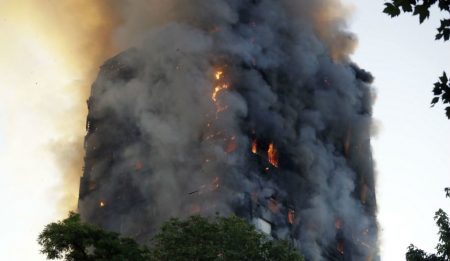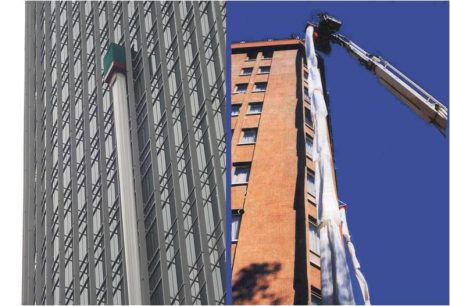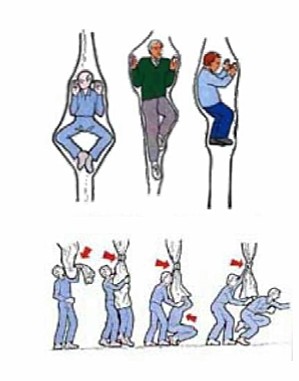June 20, 2017 – In light of the Grenfell Tower fire in London that engulfed the 24-storey building, U.K. blogger, Ian Pearson, an engineer and proclaimed futurist, went on the web searching for technology that might have provided an effective rescue system for those people who could not be reached because their descent escape routes were cut off. As of June 18, 2017, the death toll has reached 79. The building was home to 600 residents living in 120 apartments.
The speed of the fire as it spread, the engulfing of much of the exterior surface, the materials used in resurfacing the tower, and a history of inadequate fire safety technology on site, all contributed to the high mortality. Residents living in upper floors had little opportunity to escape. With no balconies and no external fire escape, Grenfell was an accident that its residents feared would happen. But Pearson found when he went online a fireproof escape chute that could be extended as high as 100 meters (330 feet) using a skylift crane or if attached to a balcony, external ledge or window. The Grenfell Tower stood 70 meters (220 feet) in height. So if London’s firefighters had this type of technology on hand it may have come into play to help save more lives.
Pearson decided to see if a technology existed that could have helped save the lives of Grenfell residents. He did a Google search and found both a permanent and portable external fireproof escape chute. The portable one which can be extended to 61 meters (200 feet) could have been used to rescue people from the upper floors of the Grenfell Tower which stood 70 meters (220 feet) in height.
Called the Ingstrom Escape Chute (R), the technology has been developed by Mobiltex Evacuation Systems, a Swedish company. Is the technology new? No. On its website, Mobiltex describes it as “standard rescue equipment used by fire brigades worldwide for high rise rescue operations.”
What is its composition? It consists of three material layers. The outer containing fiberglass is fire resistant. The middle layer is Spuncell elastic and designed to allow those in the chute to manage a safe rate of descent. The innermost layer is Kevlar and designed to support the weight of the entire apparatus. Once inside the chute, evacuees are shielded from the fire, heat, and smoke. The chute can also be accessorized to include emergency lighting, exit light, walky-talky, and escape smoke hood.
How do people move through the chute? The illustration below shows how the chute conforms to the person descending and allows them to use their arms and legs to slow the rate of descent.
The chute can be installed permanently externally to a building with access from a balcony, ledge or window. Multiple chutes which would lie flat when not in use could give a building many escape routes.
The chute also comes with an internal multiple-escape system which if installed in a vertical building shaft could provide an effective escape route for many floors in case of fire.
A summary of the chute’s benefits follows:
- It requires no power to operate.
- It protects evacuees from fire and its effects.
- It can be strategically placed on the building surface or be drawn up to the building for maximum egress.
- Whether affixed or portable it is easy to deploy.
- It can transport a continuous flow of evacuees and requires little or no instruction to use.
- It involves little physical effort to control the rate of descent.
- It is suitable for all ages and physical conditions including those with impairments.
I have no idea the price but it would seem to be an invaluable accessory to any firefighting operation in an urban setting. Too bad it was not available at Grenfell Tower.











